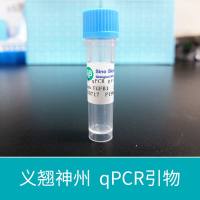Microfluidic Primer Extension Assay
互联网
1047
MicroRNAs (miRNAs) are a new class of biomarkers. They represent a group of small, noncoding RNAs that regulate gene expression at the posttranslational level by degrading or blocking translation of messenger RNA (mRNA) targets. miRNAs are important players when it comes to regulating cellular functions and in several diseases, including cancer (Cancer Res 66:7390–7394, 2006; Nature 435:834–838, 2005). So far, miRNAs have been extensively studied in tissue material. Only recently, it was found that miRNAs also exist in a broad range of body fluids (Clin Chem 56:1733–1741, 2010). A major challenge still is the efficient and specific detection of miRNAs. The short length of miRNAs, with only 17–27 base pairs, comes with technical difficulties for analysis. Furthermore, individual miRNAs, especially members of a miRNA family (e.g., the let-7 family), show high sequence homology, with sequences differing by as little as a single base pair. Although miRNAs are abundant in higher copy numbers compared to mRNAs, miRNAs lack a common feature like a poly-A tail that eases detection in a complex background of other RNA species. Besides qPCR, in situ hybridization, and next-generation sequencing, microarrays are versatile tools for high-throughput analysis of already known miRNAs (PLoS One 12:e9685, 2010; Nat Genet 38:S2–S7, 2006; Nature Methods 50:298–301, 2010). Different assay formats have been proposed for expression analysis of miRNAs on microarrays, of which most employed prelabeled RNA molecules. As a modification, the so-called RAKE assay was developed that combined the use of unlabeled RNA with on-chip enzymatic labeling by exonuclease cleavage and polymerase primer extension (RNA 12:187–191, 2006; Nature Methods 1:155–161, 2004; Genome Res 16:1289–1298, 2006).
Here, we describe a simple method for detection of miRNAs based on a combination of stringent hybridization and enzymatic primer extension on a microfluidic microarray starting from total RNA material, without the need for enrichment, amplification, or labeling of the native RNA samples (N Biotechnol 25:142–149, 2008). This assay can be used with starting material as low as 30 ng of total RNA. We have used this technique extensively for identifying specific sets of miRNAs (miRNA signatures) for diagnosis of cancer and cardiovascular or inflammatory diseases from blood samples of patients (Br J Cancer 103:693–700, 2010; BMC Cancer 9:353, 2009; PLoS One 4:e7440, 2009; BMC Cancer 10:262, 2010; Basic Res Cardiol 106(1):13–23, 2011).









